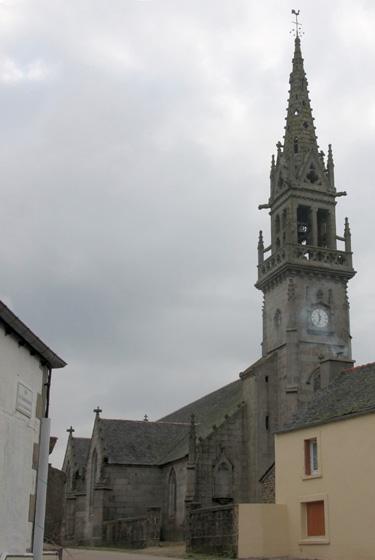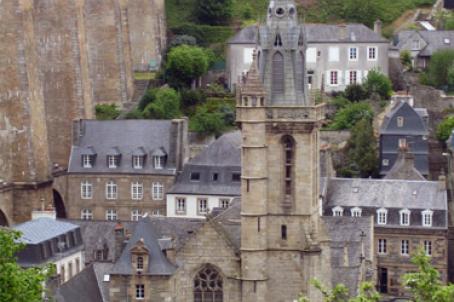Church of Saint-Jean-Baptiste
Saint-Jean-Baptiste de La Feuillée Church (it dates only from 1858-1860, rebuilt but in neo-gothic style) flamboyant by architect Jules Boyer, but it preserves important elements of the previous parish church dating from the 15th and 16th centuries, itself built on the site of an earlier church that disappeared in the 13th century. It has a bell tower with a gallery and an octagonal spire. The door of the south porch comes from the old church, as does one of the windows. Numerous gargoyles decorate the building. It contains ancient statues including that of Saint Houardon and that of Itron Varia Menez Are, a remarkable Piètà and a beautiful high altar. It also preserves 12 very beautiful frescoes and murals which were the subject of an inventory and study in 2000.
About this building
Founded in 1160 by the Dukes of Brittany in favour of the commandery of the hospitallers of Saint John of Jerusalem, the present church stands on the site of a building that some authors partly date back to the 13th century. Works of arrangement in the 17th century including the murals. Rectangular building. Flat chevet pierced by a bay with an added lattice. South porch covered with a ribbed vault. Off-work north sacristy. North chapel with baptismal font. Off-work western massif: square tower, platform delimited by a balustrade carrying the bell chamber, openwork masonry spire. Uncovered gables with carved gables. Blind nave with eight bays and aisles, pointed arches resting on flat cutters supported by small columns. Nave's piers with spot marks. Traces of the location of the former rood screen (fourth bay). Mural paintings on the east wall of the chevet. Floor covered with large schist slabs.






